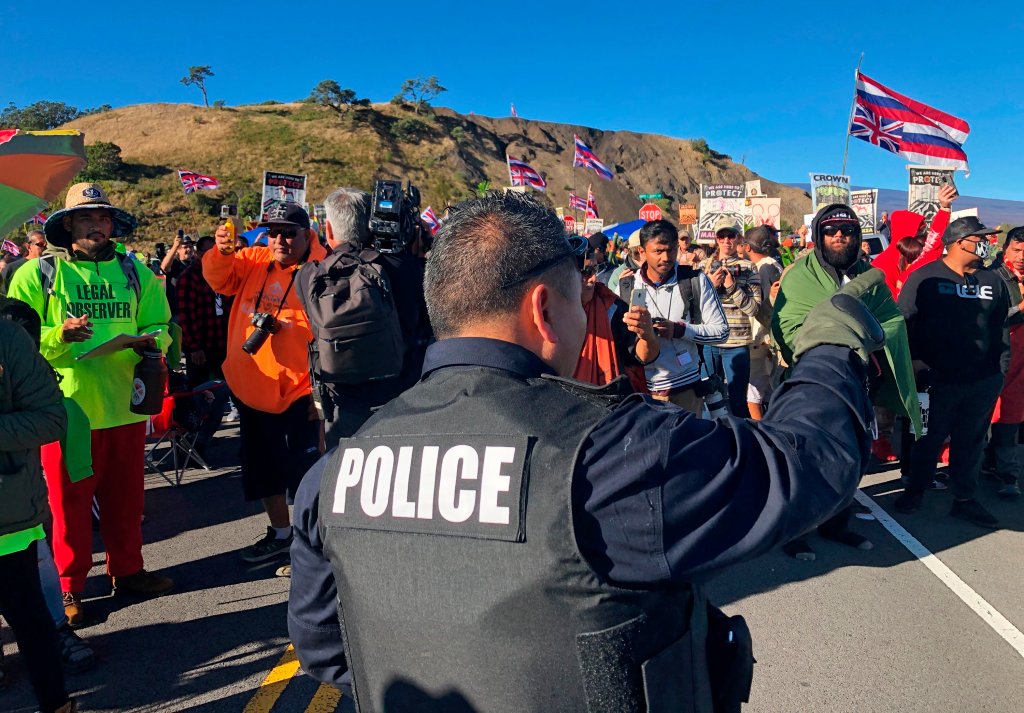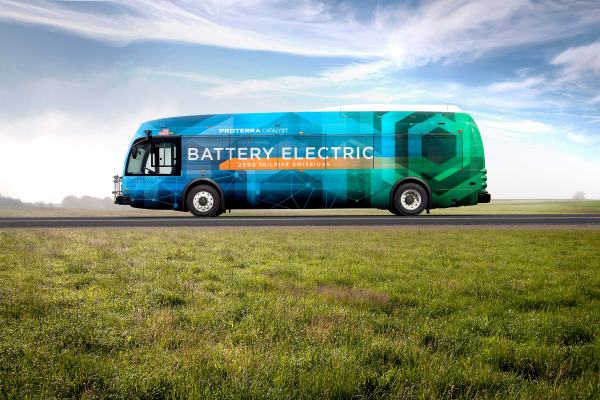By Caleb Jones and Jennifer Sinco Kelleher | Associated Press
MAUNA KEA, Hawaii — Singing, chanting and lying on the ground in the road, hundreds of people demonstrated on Monday against the construction of a giant telescope on a mountaintop that some Native Hawaiians consider sacred.
The protests were the latest salvo in a yearslong fight that pits scientific discovery against cultural preservation.
Scientists hope the massive telescope planned for the site, a world-renowned location for astronomy, will help them peer back to the time just after the Big Bang and answer fundamental questions about the universe. But some Native Hawaiians consider the land holy, as a realm of gods and a place of worship.
At about daybreak Monday, a group of kupuna, or elders, sitting in chairs, tied themselves together with rope and blocked the road to the summit of Mauna Kea. Another group of protesters lay prone on the ground, with their arms shackled under a grate in the road.
The road was officially closed hours after it was essentially blocked by protesters. The elders tied together were expecting to be arrested.
After two protest leaders spoke with police, they addressed the crowd and told them anyone who didn’t move would be arrested. The group would move aside, but the elders were expected to remain, protest leaders Kaho’okahi Kanuha and Andre Perez said.
Telescope opponent Jennifer Leina’ala Sleightholm said she hoped peaceful protests would lead to an end of the project while acknowledging that was an unlikely scenario.
“I think I know what will happen, but what I hope will happen is I hope that they would just turn around and save our kupuna,” she said, using the Hawaiian word for elders.
A puuhonua, or place of refuge set up at the base of Mauna Kea, won’t be swept by authorities, Kanuha and Perez told protesters after consulting with police. Protesters planned to stay overnight.
Groups of activists began gathering on Sunday, singing and praying at the base of the mountain. They declared the area, which is well off the highway at the intersection of the mountain’s access road, a place of refuge and safety.
“This is Hawaiian homelands,” said Kealoha Pisciotta, one of the protest leaders. “We’re clearly out of their way, we’re not obstructing anything, everyone is in ceremony.”
The project has been delayed by years of legal battles and demonstrations, drawing attention from the likes of “Aquaman” actor Jason Momoa, who has Native Hawaiian ancestry and has voiced opposition to the telescope.
Scientists selected Mauna Kea in 2009 after a five-year, worldwide search for the ideal site.
Protests disrupted a groundbreaking and Hawaiian blessing ceremony at the site in 2014. After that, the demonstrations intensified.
Construction stopped in April 2015 after protesters were arrested for blocking the work. A second attempt to restart construction a few months later ended with more arrests and crews pulling back.
Hawaii’s Supreme Court has ruled the construction is legal, permits are in place, and the state has given the company behind the telescope a green light to resume building. The company is made up of a group of universities in California and Canada, with partners from China, India and Japan.
Ancient Hawaiians considered the location kapu, or forbidden, according to the University of Hawaii. Only the highest-ranking chiefs and priests were allowed to make the long trek to Mauna Kea’s summit above the clouds.
Today, the university leases the land at the summit from the state for existing telescopes and observatories on the summit. A road built for telescope access decades ago is used by thousands of tourists and locals each year, including Native Hawaiians who go there to pray.
Supporters of the $1.4 billion telescope say the cutting-edge instrument will not only make important scientific discoveries but bring educational and economic opportunities to Hawaii.
The telescope’s primary mirror would measure 98 feet in diameter. It would be three times as wide as the world’s largest existing visible-light telescope, with nine times more area.
Gov. David Ige has said unarmed National Guard units would be used to transport personnel and supplies and enforce road closures but would not be used in law enforcement capacity during what could be weeks of protests.
In a news conference Sunday, Ige said that he “respected the right of people to protest” at the telescope site as long as protesters behave lawfully.
“As construction begins, our number one priority is keeping everyone safe,” Ige said, adding that he wants to make sure construction workers and truck drivers have unimpeded access to the telescope site.










